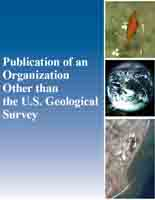Glaciers in Western Canada-conterminous US and Switzerland experience unprecedented mass loss over the last four years (2021–2024)
Links
- More information: Publisher Index Page (via DOI)
- Open Access Version: Publisher Index Page
- Download citation as: RIS | Dublin Core
Abstract
Over the period 2021–2024, glaciers in Western Canada and the conterminous US (WCAN-US), and Switzerland respectively lost mass at rates of 22.2 ± 9.0 and 1.5 ± 0.3 Gt yr−1 representing a twofold increase in mass loss compared to the period 2010–2020. Since 2020, total ice volume was depleted by 12% (WCAN-US) and 13% (Switzerland). Meteorological conditions that favored high rates of mass loss included low winter snow accumulation, early-season heat waves, and prolonged warm, dry conditions. High transient snow lines, and impurity loading due to wildfires (WCAN-US) or Saharan dust (Switzerland) darkened glaciers and thereby increased mass loss via greater absorbed shortwave radiation available for melt. This ice-albedo feedback will lead to continued high rates of thinning unless recently exposed dark ice and firn at high elevations is buried by seasonal snowfall. Physical models that simulate impurity deposition and movement through firn and ice are needed to improve future projections of glacier mass change.
Study Area
| Publication type | Article |
|---|---|
| Publication Subtype | Journal Article |
| Title | Glaciers in Western Canada-conterminous US and Switzerland experience unprecedented mass loss over the last four years (2021–2024) |
| Series title | Geophysical Research Letters |
| DOI | 10.1029/2025GL115235 |
| Volume | 52 |
| Issue | 12 |
| Publication Date | June 25, 2025 |
| Year Published | 2025 |
| Language | English |
| Publisher | American Geophysical Union |
| Contributing office(s) | Northern Rocky Mountain Science Center |
| Description | e2025GL115235, 10 p. |
| Country | Canada, Switzerland, United States |


